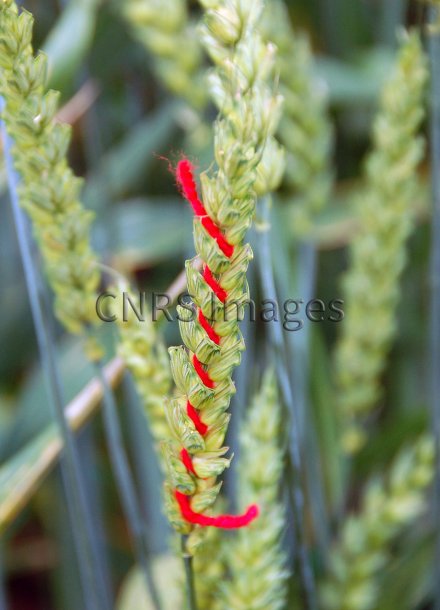Production year
2012

© Rozenn LE GUYADER / GQE - Le Moulon / CNRS Images
20170092_0006
Marked sterile wheat ear in a field at the Moulon site in Essonne, Île-de-France. Wheat flowers are hermaphroditic and contain the ovule and the stamens. They generally self-fertilise, although certain genes result in infertility of the male reproductive function, and in this case fertilisation is carried out by another plant that is fertile. An ear with a sterile male function was marked in May, when researchers can identify them due to the separation of the glumes to allow the pistil to receive external pollen. Research scientists at the Quantitative Genetics and Evolution - Le Moulon unit study the genetic, epigenetic and molecular control of both qualitative and quantitative traits, and their importance in the adaptation and evolutionary history of plant species. They optimize the selection process according to target characteristics (growth, development and adaptation), incorporating advances in genomics and harnessing genetic resources, while taking into account changes in environmental conditions and growing methods.
The use of media visible on the CNRS Images Platform can be granted on request. Any reproduction or representation is forbidden without prior authorization from CNRS Images (except for resources under Creative Commons license).
No modification of an image may be made without the prior consent of CNRS Images.
No use of an image for advertising purposes or distribution to a third party may be made without the prior agreement of CNRS Images.
For more information, please consult our general conditions
2012
Our work is guided by the way scientists question the world around them and we translate their research into images to help people to understand the world better and to awaken their curiosity and wonderment.